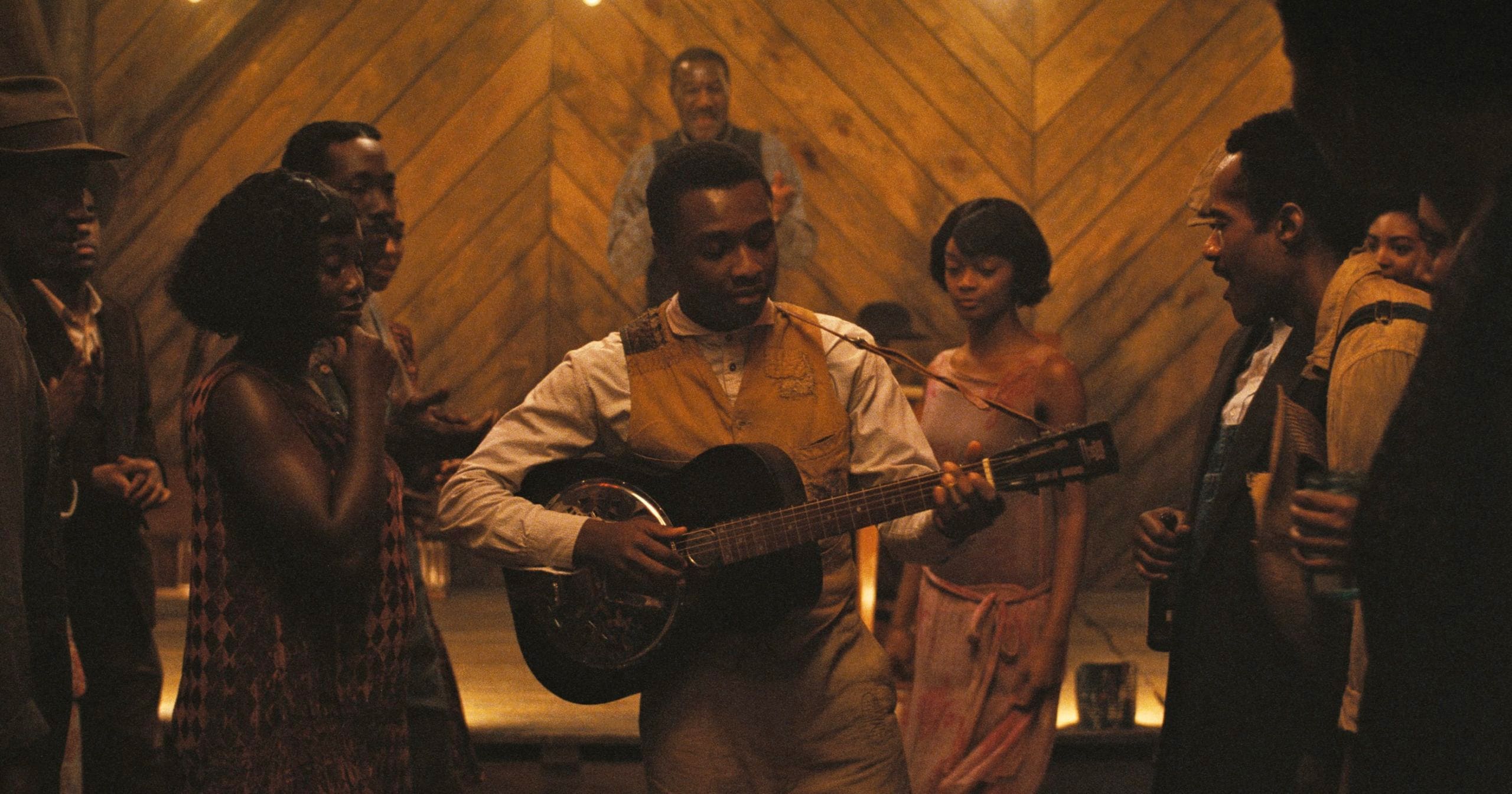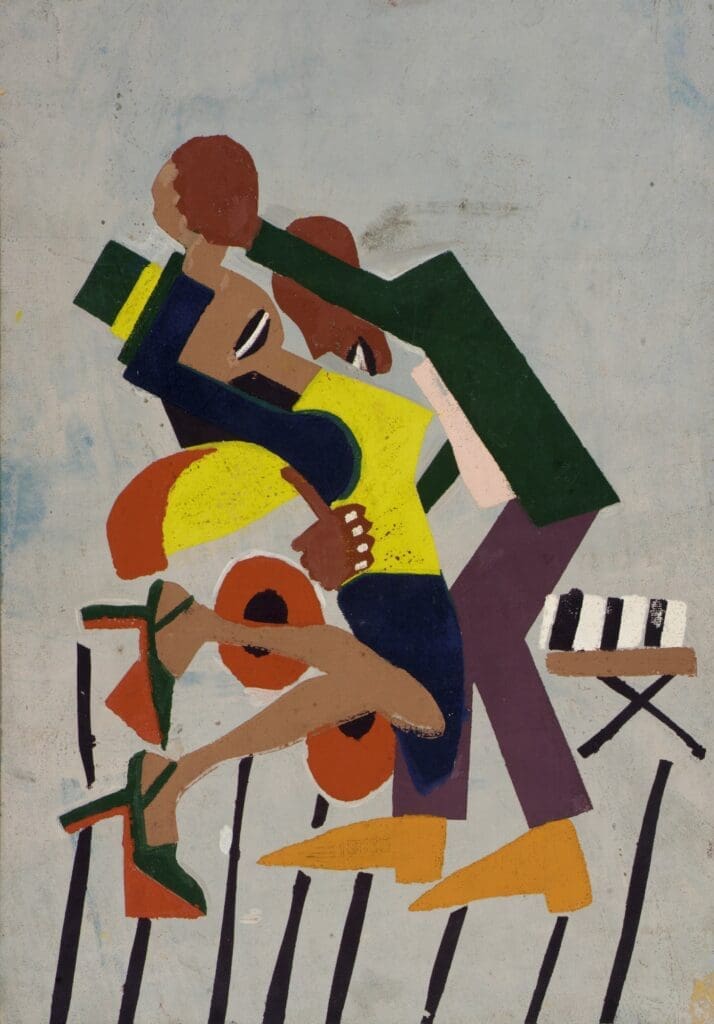M
My first faith crisis had a soundtrack.
I must have been eleven or twelve, a young Christian with a fundamentalist pastor for a father and a budding love of popular music for a curse. The precipitating incident involved a boom box. It was the 1970s.
The portable music player, which combined an AM/FM radio and a cassette tape deck, had been a gift. I was especially excited about the tape deck and the prospect of recording songs off the radio. When I played that first tape for my father, however, I quickly discovered I was alone in my excitement.
I don’t recall the exact song, but I remember it was secular, maybe funk, maybe even disco—again, it was the seventies. But what I remember most is how my father’s face fell when the first bars hit his eardrums. That was when I learned that it was not lawful for a Christian to listen to such music, as a Pharisee might say. Such music was not holy, as my father did say. (I don’t recall him calling it “devil’s music,” but soon after I learned that is what others in our church community called it.)
For years to come, I struggled with the dissonance between wanting to be faithful to my God and feeling instinctively that my father was wrong. I had heard something in the music that convinced me there were more things in heaven and earth than could be fit neatly in boxes labelled “holy” and “profane.” Not coincidentally, that boom-box moment marked an early step on my journey away from fundamentalism and, sadly, my father.
It had been some time since I thought of those days, and it may have been longer had I not watched Ryan Coogler’s ambitious new film, Sinners.
A heady genre cocktail of supernatural chills and vivid period detail, Sinners tells the story of Sammie “Preacher Boy” Moore, a young African American sharecropper in Depression-era Mississippi who loves the blues. A gifted musician, Sammie dreams of fame and a life of playing the blues far from the Delta. In his way stand poverty, Jim Crow, and his father, a preacher who strongly disapproves of his son’s passion for the “devil’s music.”
“You keep dancing with the devil,” Sammie’s father warns early in the film, “one day he’s gonna follow you home.”
When Sammie’s gangster cousins, twin brothers who go by the names Smoke and Stack (both played by Michael B. Jordan in a mesmerizing feat of self-chemistry), invite Sammie to play at the opening night of their new juke joint on the outskirts of town, the young man jumps at the chance. Leaving his father and the church behind him, Sammie heads into the future and the best day of his life. Or it would have been before a gang of vampires crashed the party.
Sinners has much on its mind. While acquitting itself admirably as a horror film in the best genre tradition, the exquisite attention to the details of sharecropper life and Delta folkways tells other, more interesting stories. Under Coogler’s hand, these stories coalesce into an illuminating portrait of race, faith, folklore, cultural appropriation, and—most of all—music.
In Sinners, music is an elemental force. It transcends time and space, connects ancestors to their descendants, and carries a people’s cultural DNA into the future as it evolves with them. Music can bring people together, as in a juke joint on the outskirts of town, or tear them apart like Sammie and his father—a familiar dynamic for those who grew up in religious fundamentalist settings.
Music has been a fixture of life on Earth since Homo sapiens emerged as a species. Archaeologists estimate that the oldest musical instrument unearthed so far—a flute made of bird bone—is about forty thousand years old. Given the harshness of early life, the fact that humans made time for music indicates that this was no hobby.
Music can bring people together, as in a juke joint on the outskirts of town, or tear them apart.
According to Christian teaching, when God created humanity, he gave them the mandate to exercise dominion over his creation. In his fascinating book Sapiens: A Brief History of Humankind, historian Yuval Noah Harari observes that this dominance may be due to our species’ unique ability to tell stories. This ability, Harari notes, “enables millions of strangers to cooperate and work towards common goals” in a way that a pride of lions or a troop of chimpanzees never could. And music has played an essential part in this storytelling enterprise. Think about how worship or liturgical music connects religious acolytes across time and space, or how national anthems create solidarity among strangers who believe themselves to be members of a social network called a “nation.”
Sinners is about the stories we weave using music as the phantom thread, a point vividly illustrated in a bravura sequence in the vein of Goodfellas’ montage of whacked mobsters set to the piano exit of Eric Clapton’s “Layla” or Trainspotting’s perfectly kinetic “Choose life” opening powered by Iggy Pop’s “Lust for Life.”
The sequence occurs during the opening night at the twins’ juke joint. Sammie takes the stage for his first song, a blues number about the relationship with his father titled “I Lied to You.” As the song takes off, so does the camera, floating like a spirit over the dance floor. As the camera glides among the revelling sharecroppers, we notice they are no longer alone. Among them we find other revellers who are quite literally out of time: a funk guitar player, a hip-hop MC, and some Chinese Xiqu performers next to African Igbo priests, to name a few. Through the power of music, the entire juke joint is phase-shifted to a higher plane of existence where the foundational stories from the past, present, and future, as well as east, west, north, and south, converge.
But music’s unique power is perhaps most evident in how those in charge attempt to control it. Parents, ministers, teachers, governments, and anyone whose legitimacy depends on a foundational story are wary of music for its potential to tell counter-stories.
The Nazis had their lists of entartete Musik (degenerate music) to protect the Fatherland’s story of Aryan superiority from music that was considered too Jewish (Mendelssohn, Mahler, Schoenberg) or too black (jazz). During China’s Cultural Revolution, musicians who would not disavow appreciation of music by the likes of Debussy could find themselves arrested, tortured, or executed. I am old enough to remember Second Lady Tipper Gore’s organization, the Parents Resource Music Center (PRMC), and the “Filthy Fifteen” list of objectionable songs assembled to support mandatory labelling of albums to help parents control what their children listen to. The list of prohibited music may very well go back to that guy with the bird flute. (If human nature is any guide, I am sure his cave mates had notes on his playing.)
Of course, religions have laid claim to some of the oldest foundational stories and consequently have tried to control musical expression for just as long—a fact of which Sinners is keenly aware. In some ways, the film is about the clash of foundational stories. The world of Sinners is one where, despite the impressive imperial machinery that fuelled Christendom’s spread to new lands, the old pagan stories proved surprisingly durable. They remained lodged in the memory—and music—of conquered peoples, existing precariously in the shadow of the empire.
“Blues wasn’t forced on us like that religion,” an old bluesman tells Sammie. “No, sir, we brought this with us from home.” Even the lead vampire, an Irish lad by the name of Remmick, gets a moment of pathos (and shows his age) when he acknowledges that what he knows of Christianity came from “the men who stole my father’s land and forced these words upon us.” He also gets to show what he brought from home when he leads his congregation of the undead in a rousing rendition of the popular Irish folk song “Rocky Road to Dublin,” complete with step dancing, a style of dance with deep Celtic roots that predate Christianity’s arrival in the Emerald Isle.
That all these stories find a home in a sharecropper juke joint at the edge of town is not an accident. In Sinners, the juke joint is like an island of imperial misfit toys. This is where Christendom’s outcasts find whatever passes for community in a world that would just as soon see them back in chains or worse. It is an “improper” place in the words of another character, which is why Sammie’s father wants his son nowhere near it. He fears the power of the music to lead his son astray. The juke joint is a place for stories that have no place in church. In other words, the juke joint is a place for sinners.
The Christian church has been wary of music’s power since its inception. As early as the fourth century, church fathers like John Chrysostom were already referring to secular music (and even musical instruments) as “the devil’s garbage.” Another early church father, Clement of Alexandria, instructed Christians that the “pliant harmonies” of secular music “be driven as far as possible from our robust minds.”
Twelve centuries and a Reformation later, the leaders of new breakaway church factions were still (mostly) singing the same tune. John Calvin, for example, conceded that music is indeed “a gift given by God” to delight his creatures. However, like his early medieval predecessors, Calvin worried about secular music’s power “to loosen the bridle to dissolution or to make us soft in disordered delights.”
From Calvin, we can draw a line through the church-sponsored bonfires of Beatles albums in the 1960s and the spiritual panic over hidden satanic messages in heavy metal albums of the 1980s—the latter of which I witnessed first-hand—to fretting over the influence of anti-Christian messages in Taylor Swift’s music. Speaking of the latter, in 2024, at the height of Eras Tour mania, the Gospel Coalition published an article to help Christian parents navigate the Taylor Swift phenomenon with their children. They felt it necessary because, as they put it, many Christians under their care wanted to know “how they should think about her latest material. . . . Should all Swift’s music be off-limits?”
Though not part of the Reformed tradition, my father shared Calvin’s wariness of secular music. Over time, I came to realize that, like the famous reformer and the early church fathers, my dad believed not only that secular music was fundamentally different from church music but also that it posed a danger to Christians. The stories behind the secular melodies had the power to capture the imagination of impressionable believers and lead them astray like the Pied Piper of lore. Had he been alive when the Eras Tour rolled into town, my father would not have needed a Gospel Coalition article to tell him “how to think” about the latest from the bard of Reading, Pennsylvania.
The fear of apostasy, or “falling away,” from the faith ran deep in the fundamentalist Christian circles of my youth. It often expressed itself as an almost superstitious fear of the world beyond the church’s doors, particularly its scholarship and art. Of special concern was art that put a spotlight on sin and evil, like the paintings of Francis Bacon, the films of David Cronenberg, or rock ’n’ roll music. The way my co-religionists talked about these works and others (to the extent they felt safe doing so), one could be forgiven for imagining they possessed a supernatural ability to destroy a Christian’s faith upon mere contact. In the face of such power, it is understandable why my brothers and sisters in Christ at the time felt censorship was the only solution. As we have already established, they were hardly the first to ensure allegiance to a foundational story by forbidding access to other stories.
Despite my father’s best efforts, I remained unconvinced, though I never told him. I decided that while I lived in his house, I needed to respect his rules. Nevertheless, I found the fear behind the censorship incongruent with believing in the greatest story ever told. To my young eyes, the almost irrational fear of the outside world betrayed a lack of confidence in the Christian story to stand scrutiny.
Years later, I would learn that fear of the outside world was a staple of Protestant fundamentalism, particularly the strain that grew in the United States at the beginning of the twentieth century. This strain became infamous during the so-called Scopes Monkey Trial of 1925, about teaching evolution in public schools. Thirty-three years later, evangelical theologian J.I. Packer sought to distance the emerging evangelical movement from its fundamentalist roots in his book Fundamentalism and the Word of God. In it, he drew a bright line between the two: “The Evangelical is not afraid of facts, for he knows that all facts are God’s facts; nor is he afraid of thinking, for he knows that all truth is God’s truth, and right reason cannot endanger sound faith.”
I have yet to come upon another story in music, literature, or any other medium that has made me unsure of my belief in the foundational story of my faith: Christ has died, Christ is risen, Christ will come again.
Packer’s bright line became mine. Speaking for myself, I can attest that in the fifty years since becoming a Christian, I have yet to come upon another story in music, literature, or any other medium that has made me unsure of my belief in the foundational story of my faith: Christ has died, Christ is risen, Christ will come again. And while it would be a mistake for fellow Christians to read my story as a blanket invitation to indiscriminate media consumption, it should be read as empirical proof that apostasy need not be the inevitable outcome of contact with stories from the world outside the church.
The conclusion I reached instinctively as a teenager and understood later as an adult is that God, in his wisdom, did not limit the gift of music, or art more broadly, to those who worship him. Instead, as is his way, he showers blessings on all those made in his image, believers and unbelievers, the elevated and the vulgar alike. Therefore, whatever virtuosity we find in any piece of music, whatever is “excellent or praiseworthy” about it as the apostle Paul puts it, reflects God’s image, brings glory to him, and therefore ultimately must come from him.
The fact that some of these praiseworthy things originate from less-than-praiseworthy contexts should not be cause for knee-jerk censorship but for discernment. Jayme Stayer, a former professional musician, now Jesuit priest and professor of English at Loyola University, wrestles with his instinctual appreciation of music from artists he personally knows to be morally compromised. In his recent essay for the spring 2025 issue of Image, “What Do We Do with Monstrous Musicians?,” Stayer writes of a continuum that “weighs artistic genius against inhumanity,” and he draws lines on that continuum to determine which artists will get a spot on his mental playlist. Stayer’s piece is a must-read for anyone interested in the moral and political purity of artists, from R. Kelly to J.K. Rowling.
Part of my journey away from fundamentalism was accepting that people of good faith can draw those lines differently, that while I can hear something “excellent or praiseworthy” in the music of Led Zeppelin over and above the din of their legendary offstage debauchery, others may not. I have learned that a shared calling to do everything “for the glory of God” as the apostle Paul instructs the culturally diverse church in Corinth, rather than legalistic conformity of thought and action, is the foundation of Christian fellowship. I realized that my father’s lines need not be mine.
Toward the end of Sinners, there is a moment when Sammie, bruised and battered from fighting monsters, stumbles back into his father’s church, guitar neck in hand, looking for refuge. The grateful elder embraces the son and welcomes him back into the warm fold of God’s love on one condition: he must drop the guitar and turn his back on the blues. Coogler extends the silence that follows for what feels like an age. And in the silence I found myself inexplicably wishing for reconciliation.
I like to think that my dad and I had arrived at an unspoken understanding by the time he died in 1999 after a long battle with diabetes and renal failure. I like to think that he respected the manner in which I chose to live out my Christian faith, even if he did not wholly understand it. I certainly came to a better understanding of his appreciation for a theology that promises respite from a dangerous secular world after I learned about some of the real-life monsters he encountered during his formative years. And I cannot help but wonder what might have been if I had listened to my father and walked away from that boom box all those years ago.
By the time the credits roll, Sammie has made his decision, and the soundtrack of his life follows suit. Sinners understands the human need to engage the world through music as well as the need to control how others engage the world through music. In Sinners, Coogler and his team fashioned an original, dynamic, and heartfelt ode to an ancient human impulse as old as a prehistoric flute made from bird bone. And for an old ex-fundamentalist with daddy issues, it was a reckoning with past choices and roads not taken.
In other words, Ryan Coogler’s Sinners is all about the blues.






